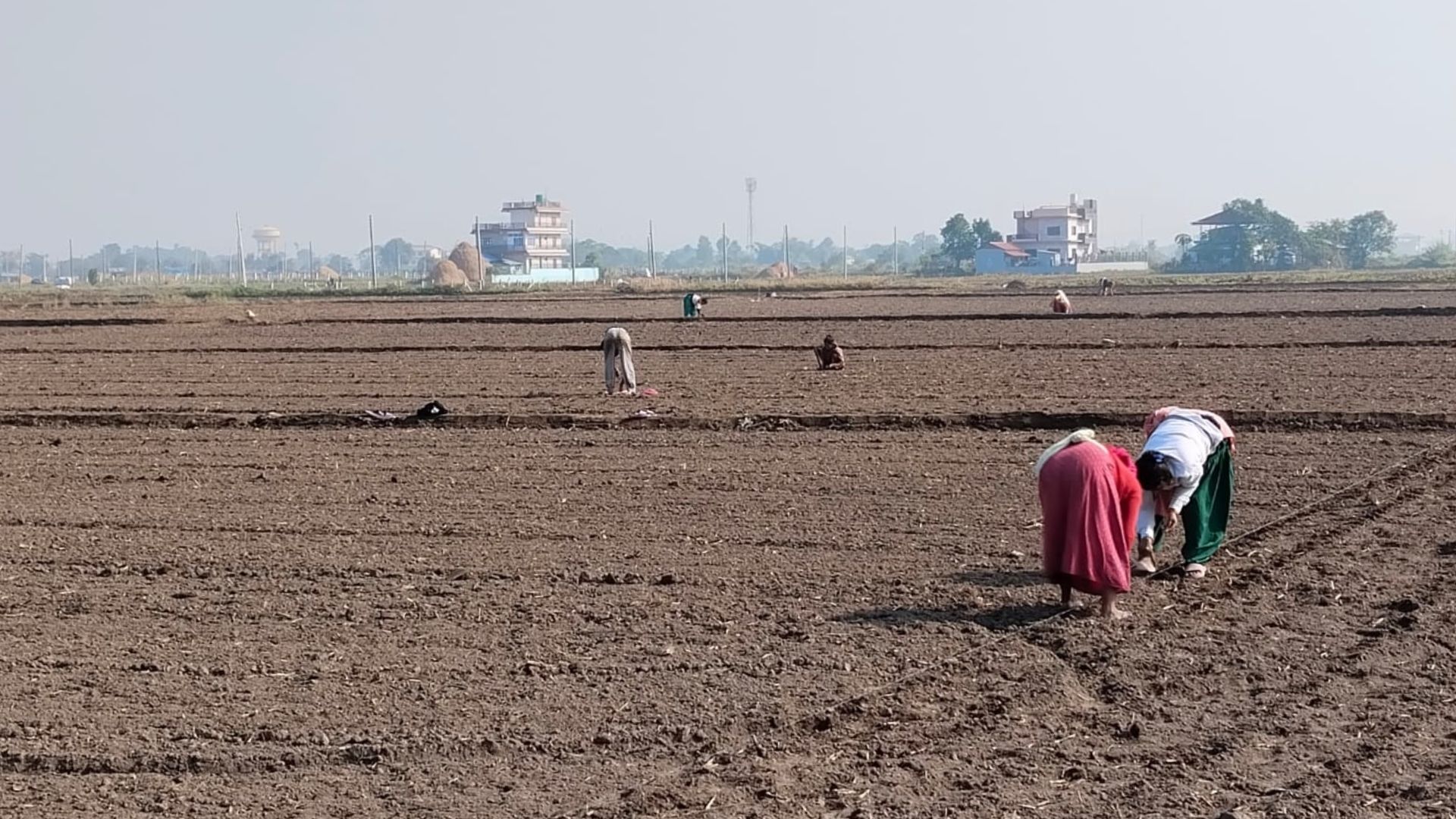Starting a business? Or Expanding?
Funding perhaps is the first thing that comes to mind, and often lets you down. You may feel demotivated to make your idea a reality because you don’t have the money. But don’t get discouraged because everything requires patience and effort and with a solid business plan (you can download a business plan template here), you can obtain the funding you need.
| According to a NRB study, family wealth and inheritance and private savings are the major sources of initial financing for Nepal’s MSMEs.
The two major sources of initial financing are family wealth and inheritance (33.1%) and private savings (25.8%). Only 16% source their initial financing from banks and financial institutions, while 8% rely on informal finance/credit (which comes with a high level of risk). Just 0.5% of MSMEs receive investments from venture capital firms. NRB has mandated commercial banks to extend 40% of their loans to sectors such as agriculture (15% by July-end 2023), energy and tourism (10% by July-end 2024), and MSMEs (15% by July-end 2024). MSME lending is defined as loans below Rs 10 million. Similarly, development banks must issue 20% and finance companies 15% of their loans to these sectors by 2023. |
You will undoubtedly need to put in all that effort to earn the funding unless you are financially secure or have a trust fund from your family.
Else, you will have to either use your own personal savings, borrow, or seek out investors.
This blog will walk you through the ins and outs of five funding options. It also explores loan products specifically designed for businesses. So, let’s get started!
Bootstrapping your business
Bootstrapping, also known as self-funding or personal investment, is a successful method of funding a startup, particularly when your business is just getting off the ground. The financiers won’t have a reason to turn you down if you apply for a business loan in the future as they will see your business’s stability as a low-risk factor.
Many businesses use savings or personal investment as their primary source of funding. Before bootstrapping your business, you need to have a budget plan that outlines projected cash inflows and outflows for the following few years.
Evaluate the possible return on investment, profitability, and long-term sustainability of your business plan. Further, analyze the potential risks and rewards and if required look for professional advice to help you make appropriate decisions.
There are also associations and initiatives that can provide you with small seed funding but you’ll need to do your research for that. So don’t forget to use the internet and network and consult with your friends.
Loan and equity from kith and kin
Your close friends and family have a personal interest in your success. Especially at the beginning, it can increase their interest to invest in your business.
To convince them, make sure you have a strong business plan that outlines the goals of your MSME, together with market research, financial projections, and a payback plan.
Create a loan or equity agreement that includes all pertinent terms and conditions. The parameters of the loan, such as the loan amount, interest rate, time frame for repayment, and any requisite collateral or guarantees, should be specified. Be transparent and open with your financiers and make sure that everyone understands one another and comes to an agreement.
Loans from banks and financial institutions (BFIs)
Banks and financial institutions (BFIs) are the first places entrepreneurs look when considering funding. Banking institutions provide working capital loans and term loans as two types of financing for businesses. The standard procedure for obtaining a loan from a bank includes presenting a business plan, three-year financial projections, and collateral documents.
BFIs win out due to the relatively lower interest rate.
Laxmi Bank’s “Sana Byawasayi Karja“, Global IME Bank’s “Global Small Business Loan”, Nabil Bank’s “Nabil Sajilo Express Karja” and “Nabil Eco-Friendly Business Loan” are some of the banking loan schemes that offer funds for start-up companies regardless of the collateral.
Likewise, most banks have initiated women-centered entrepreneurship loan schemes to meet women’s need for business capital and to encourage them to undertake business ventures.
However, the procedure and time length for a loan application, approval, and disbursal can differ from bank to bank. And don’t forget to make sure the payback period is long enough for your business to survive, negotiate on interest rates and installments which can be monthly or quarterly.
Also, ask banks what are the ways they can customize their loans depending on your business needs.
Here’s a draft proposal for you.
Microfinance & co-operatives
Obtaining a loan from microfinance institutions and cooperatives might be a practical option for funding your small business in Nepal. The provision of financial services to start-ups and small enterprises, particularly those in remote regions, is the primary focus of microfinance.
They frequently place a priority on financial inclusion and offer smaller loan amounts with flexible payback arrangements. Loans from microfinance institutions have minimum documentation requirements and are suitable for small enterprises that are in dire need of financial services.
On the other hand, cooperatives often offer competitive interest rates while concentrating on local communities. For those who might not be able to meet the strict conditions of banks or financial institutions, applying for loans from microfinance groups and cooperatives can be an advantageous decision. However, it is very important to research and identify credible microfinance and cooperatives in today’s economic scenario in Nepal.
Private equity and venture capital
These funds provide businesses with not just the capital they need to survive but also the management and operational expertise, which can help in the growth of the business.
Private equity and venture capital are relatively new concepts and practices in Nepal. In 2019, the stock exchange board publicly acknowledged PEVC as an asset.
PEVCs could be more advantageous for MSMEs in Nepal with strong growth potential than dealing with commercial banks. The government has also announced plans to encourage entrepreneurs and innovative thinking by making it easier for private equity and venture capital to operate.
There are several institutional investment firms in Nepal, like Aadhyanta Fund Management, Business Oxygen (BO2), Global Equity Fund Private Limited (GEF), One to Watch (OTW), Dolma Impact Fund, and many more. See the list here.
Business Oxygen (BO2) is Nepal’s first private equity fund. Between the years 2015 and 2017, as a part of the SME Venture Initiative, it received an investment from the International Finance Corporation( IFC).
Likewise, Dolma Impact Fund makes smart investments while balancing the risk with business owners and promoters. It incorporates the sustainable social and environmental impact of the business plans provided by its investee companies. Upayo Cargo, Foodmandu, Sajilo Sewa, and Sasto Deal are some of the companies that have received funding from different institutional investment firms.
Thus, one of the aforementioned methods will undoubtedly be useful in obtaining funds for your MSME business.
What loan products can your MSME avail?
Loans are an essential financial tool for small Nepalese businesses to help with their expansion and development. These loans are designed to meet your small and medium-sized businesses’ particular requirements, help them grow, and take advantage of new business prospects.
Commercial banks, development banks, and financial institutions in Nepal are primarily responsible for making MSME loans available. These financial providers offer a range of loan options with features created to satisfy the unique needs of your business.
Different financial institutions may have various requirements and terms for MSME loans in Nepal. Several factors, including the business’s financial stability, credit standing, and loan amount, influence the sum that is taken.
As security for the loan, lenders frequently demand fixed-asset collateral, mainly land and building.
But if your ask is high and you don’t have any other sources to fund your business plan, debt financing through BFIs can be the best alternative.
There are several loan products specifically designed for businesses. Let’s dive into it:
Term Loan
A form of loan product financial institutions provide to MSMEs is known as a “term loan”. It offers an upfront lump sum of cash that is returned over a set period at a fixed interest rate. Term loans are appropriate if you are seeking capital for long-term commitments like buying equipment, building more space, or starting a new initiative.
You can also customize the loan to meet your unique business needs by choosing a loan amount, payback schedule, and interest rate that fit within your financial capacity. Further, you can create a repayment strategy, whether you want monthly, quarterly, or customized payments. Thus, term loans give MSMEs access to funding for big initiatives without interfering with their cash flow.
Working Capital Loan
A working capital loan is offered to help your MSME business with its immediate financial needs. It helps your business manage daily operations, pay for operating expenses, and maintain a healthy cash flow. Restocking your inventory to satisfy current and upcoming consumer requests is one of the best uses of your working capital loan.
When your inventory is full, you can also consider offering discounts to encourage more sales. You probably anticipate a decline in revenue or a lag in payments if you run a seasonal business. To survive the off-season, a working capital loan can help you pay all of your regular expenses, including rent, payroll, and supplier invoices.
A working capital loan, therefore, supports your financial situation, meets your cash flow requirements, and promotes the growth of your business.
Overdraft Facility
An overdraft facility is a form of lending product that enables MSMEs to withdraw more money than they currently have in their bank account. It offers a flexible source of credit, with interest only being applied to the amount used.
You can customize the overdraft facility to meet your own business needs, determining the maximum amount and the repayment schedule based on your cash flow patterns.
Further, you can negotiate the overdraft limit to make sure it offers enough flexibility to cover short-term funding difficulties. Since MSMEs don’t require complicated loan applications or collateral, they can obtain funds when needed, lowering the risk of financial constraints and maintaining efficient operations.
Here are some of the business loans provided by financial institutions.
- Vehicle loan
- Demand Loan
- Trust receipt Loan
- Trade Finance
- Bank Guarantee
- Business Mortgage Loan
- Business Continuity Loan
- Pre-Shipment Loan/Post-Shipment Loan
Documents for a Loan
Below are the usually required documents if you are seeking a loan, but may vary depending on the nature of loans and banks and financial institutions that you’ve approached:
Identification Related
- Personal identification of borrowers and guarantors
- Photograph of borrower and guarantor
- Family details from the concerned local authority
- Firm registration certificate
- PAN certificate
- Partnership deed (For partnership firm)
Collateral Related
- Land ownership certificate
- Land revenue receipt
- Rajinama/Bakaspatra/Anshabanda paper
- Ward map and file map of collateral
- Four boundaries (charkilla)
- Approved house map from local authority
- Nirman Sampanna/abhilekhikaran paper
Income Related
- Last year’s audited financial report and projected financial report for the next three years (for the existing firm)
- Only projected financial report if you are a new firm
- Details of stock, debtors, and creditors
- Year-to-date (YTD) purchase/sales
- Business plan
Remember loans from BFIs don’t come easy. You will have to fulfill certain conditions/documentary requirements as mandated by the central bank to get loans.
It’s a paper-heavy process and thus you have to be organized and legally compliant from the formative years of your business. It will test your patience.
The government of Nepal including the provincial and local government also supports MSMEs by providing grant funding, subsidized loans, and other financial benefits. So check out what they have at their disposal.














